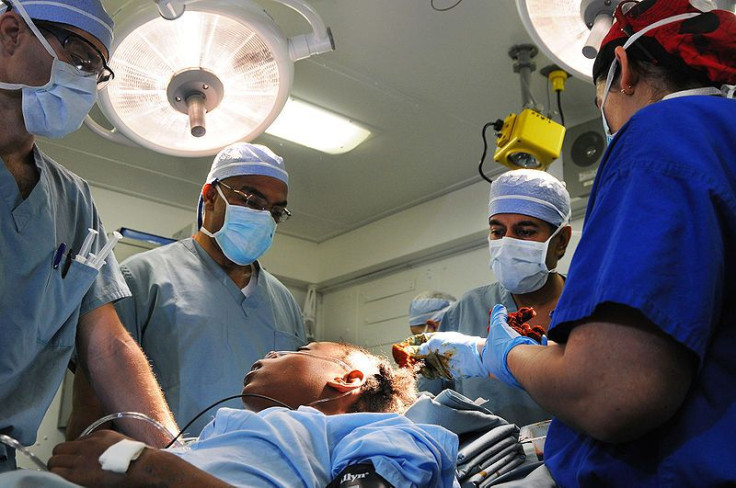First Human Head Transplant On The Horizon, Says Italian Scientist Sergio Canavero; Technology ‘Easy To Administer And Has A Strong Safety Record’

It sounds like tired science fiction, but Italian neuroscientist Sergio Canavero says he has devised a procedure to successfully remove one person's head and transplant it to another person's body.
Over the last 50 years, scientists have experimented with head transplants on various animals. While partially successful, the ultimate failures came from imperfect attachments of the spinal cord. Canavero believes his procedure has solved that problem, as he plans to use several chemicals to instantly fuse the spinal cords.
As Canavero outlines it, the procedure functions more as a body transplant. Patients suffering from tetraplegia — a total paralysis of the limbs and head — would have their head completely severed and reattached to a donor body.
The procedure, which Canavero has called GEMINI, would use an ultra-sharp blade to sever the spinal cords, which should be cooled, he reports, between 55 and 59°F.
"This is of course totally different from what happens in clinical spinal cord injury, where gross damage and scarring hinder regeneration," he wrote in the paper, which was published in the journal Surgical Neurology International. "It is this 'clean cut' the key to spinal cord fusion, in that it allows proximally severed axons to be 'fused' with their distal counterparts."
Polyethylene glycol (PEG), a polyether compound often used in laxatives, lubricating eye drops, and in nerve repair, is Canavero's main tool for fusing the host and donor together.
"PEG is easy to administer and has a strong safety record in man," Canavero wrote, "often employed as vehicle to clinically injected therapeutic agents."
It's Canavero's hope that patients with muscular dystrophies will benefit the most from the GEMINI procedure. He suggests the first patient be someone young, and either physically paralyzed but with a functioning "brain and mind," or someone with genetic and metabolic disorders of the youth.
"These are a source of huge suffering, with no cure at hand," Canavero wrote, admitting he has not addressed the ethical aspects of the procedure.
But while Canavero hasn't addressed the procedure's ethical concerns, other scientists have. Neuroscientist Jerry Silver of Case Western Reserve University has serious doubts as to the feasibility of Canavero's procedure and its moral standing.
Silver worked with Dr. Robert White in the 1970 head transplant of a rhesus monkey. "I remember that the head would wake up, the facial expressions looked like terrible pain and confusion and anxiety in the animal," Silver recalled to CBSNews.com. "The head will stay alive, but not very long." These sentiments stray considerably from Canavero's claims, says Silver, that "The monkey lived 8 days and was, by all accounts, normal, having suffered no complications."
Silver also calls into question Canavero's method of fusing the host and donor spinal cords back together.
"It's complete fantasy, that you could use [PEG technology] in such a traumatic injury in an adult mammal," Silver said. "But to severe a head and even contemplate the possibility of gluing axons back properly across the lesion to their neighbors is pure and utter fantasy in my opinion."
Canavero advises in his paper that both host and donor should lie in the same room before the transplant occurs and that severing the heads should occur at exactly the same time. Surgeons then have one hour to reattach the host's head to the donor body, which has been cooled and placed under cardiac arrest.
Once connected, doctors then restart the patient's heart, pumping blood back into the brain. If all goes to plan, "normal temperatures will be reached within minutes."
Canavero estimates the surgery would cost around $13 million. Meanwhile, Silver hopes cost never becomes a relevant factor.
"Just to do the experiments is unethical," Silver said. "This is bad science, this should never happen."
Source: Canavero S. HEAVEN: The head anastomosis venture Project outline for the first human head transplantation with spinal leakage (GEMINI). Surgical Neurology International. 2013.



























